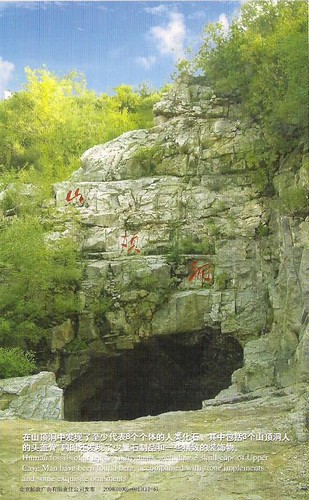Peking Man Site at Zhoukoudian, China
Zhoukoudian or Choukoutien is a cave system in Beijing in China. It has yielded many archaeological discoveries, including one of the first specimens of Homo erectus, dubbed Peking Man, and a fine assemblage of bones of the gigantic hyena Pachycrocuta brevirostris. The Peking Man lived in this cave approximately 200,000 to 750,000 years ago, if evolutionary science is true.
The Peking Man Site was discovered by Johan Gunnar Andersson in 1921 and was first excavated by Otto Zdansky in 1921 and 1923 unearthing two human teeth. These were later identified by Davidson Black as belonging to a previously unknown species and extensive excavations followed.
As per UNESCO WHS website:
Scientific work at the site, which lies 42 km south-west of Beijing, is still underway. So far, it has led to the discovery of the remains of Sinanthropus pekinensis, who lived in the Middle Pleistocene, along with various objects, and remains of Homo sapiens sapiens dating as far back as 18,000–11,000 B.C. The site is not only an exceptional reminder of the prehistorical human societies of the Asian continent, but also illustrates the process of evolution.






















0 comments:
Post a Comment